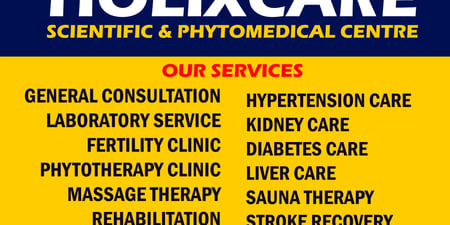Deep Tissue Massage
Deep tissue massage therapists near you
How can Deep Tissue Massage nourish you?
Deep tissue massage is a branch of massage therapy that targets the deeper layers of muscle[1] and the surrounding connective tissue. Using a combination of slow strokes and friction techniques, robust pressure is applied to muscles throughout the body[2] to release chronic patterns of tension[3].
Deep tissue massage is differentiated from other types of massage in that it is slower, firmer and less rhythmic. As such, Deep tissue massage is not intended for relaxation[4], but rather to ‘unstick’ the muscle fibres and remove any knots or adhesions that are causing pain and discomfort. Unlike remedial massage, deep tissue massage is a whole-body treatment, and does not target a specific condition or injury.
Regarded as one of the oldest health care practices, the history of massage dates back thousands of years[5]. Written records suggest that there were ancient cultures, such as the Chinese and Egyptians, who held a strong belief in the health-promoting properties of massage. Today, massage is a highly respected healing modality and is a popular therapy of choice in countries around the world.
In Australia, deep tissue massage may be provided as a standalone treatment by accredited massage therapists. Health care professionals, such as myotherapists, may also incorporate deep tissue massage into their therapy sessions.
It is important to choose a massage therapist who is registered with a professional association to ensure the highest standard of treatment. These include Massage & Myotherapy Australia[6], Massage Association of Australia[7] and the Association of Massage Therapists[8]. Members who are registered with these peak bodies are required to be suitably qualified, undertake continuous professional development and commit to upholding excellence in practice.
Benefits of Deep Tissue Massage
Deep tissue massage may benefit anyone who experiences general feelings of stiffness or tightness in the body, or for those who simply want a massage with firm pressure. It has also been shown to be beneficial for a number of physical ailments.
In a randomised pilot study, it has been shown that deep tissue massage may reduce symptoms of lower back pain[9] in people with Ankylosing Spondylitis. While further research was recommended, deep tissue massage may be considered a potential therapeutic option for this severe inflammatory condition affecting the spine.
The benefits of deep tissue massage are further supported by a study that reported positive outcomes for individuals suffering chronic lower back pain. Moreover, authors reported that the pain-reducing effects may be equivalent to using non-steroidal anti-inflammatory[10] medication.
Findings from a recently published study suggested that deep tissue massage alone or in combination with other strengthening and stretching exercises may be a beneficial short to mid-term treatment for individuals suffering from persistent neck pain[11].
What to expect from a Deep Tissue Massage session
Before your massage begins, your therapist may discuss where you feel pain or discomfort in your body. The next step of treatment will involve preparing your muscles by applying oil and light pressure, followed by the use of specific techniques.
Using techniques such as stripping and friction, your therapist will apply pressure at varying intensities to your muscles. Stripping techniques create a gliding sensation over the length of the muscle fibres, and friction techniques apply pressure across the grain to release the adhesions.
Since deep tissue massage is intended to break up the muscle tension and scar tissue, you may feel slight discomfort during your therapy. It is also not unusual to experience stiffness in the few days following your treatment. As such, it is important to keep open lines of communication with your therapist if you feel any sensation that is too uncomfortable. Drinking water prior to your session is also recommended.
Keep in mind that it is always advisable to consult a qualified health professional before commencing any wellness journey. If you have an injury or an underlying health issue, speak to your deep tissue massage therapist, who will be happy to address these concerns and personalise the therapy session to your individual requirements.
References
1. What to expect from a first deep tissue massage. Massage & Myotherapy Australia; [cited on 2024 Nov 29].
2. What is the difference between remedial and deep tissue massage? Incline Health; [cited on 2024 Nov 29].
3. Deep Tissue. Massage & Myotherapy Australia; [cited on 2024 Nov 29].
4. Massage & Myotherapy Australia. Demi International; 2023.
5. How to Become a Massage Therapist. All Allied Health Schools; [cited on 2024 Nov 29].
6. Home. Massage & Myotherapy Australia; [cited on 2024 Nov 29].
7. Home. Massage Association of Australia; [cited on 2024 Nov 29].
8. Home. The Association of Massage Therapists (AMT); [cited on 2024 Nov 29].
9. Romanowski MW, Špiritović M, Rutkowski R, Dudek A, Samborski W, Straburzyńska-Lupa A. Comparison of deep tissue massage and therapeutic massage for lower back pain, disease activity, and functional capacity of ankylosing spondylitis patients: a randomized clinical pilot study. Evidence-based Complementary and Alternative Medicine; 2017.
10. Majchrzycki M, Kocur P, Kotwicki T. Deep tissue Massage and Nonsteroidal Anti-Inflammatory Drugs for Low back pain: a prospective randomized trial. The Scientific World JOURNAL; 2014.
11. Skillgate E, Pico-Espinosa OJ, Côté P, Jensen I, Viklund P, Bottai M, et al. Effectiveness of deep tissue massage therapy, and supervised strengthening and stretching exercises for subacute or persistent disabling neck pain. The Stockholm Neck (STONE) randomized controlled trial. Musculoskeletal Science and Practice; 2019.

